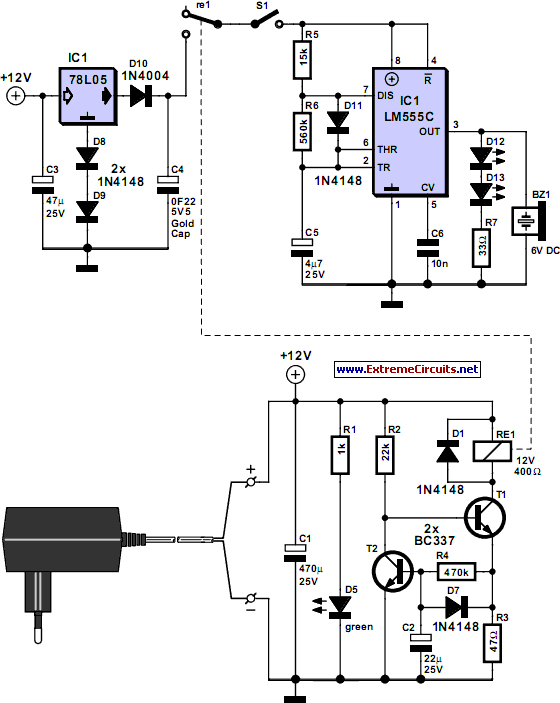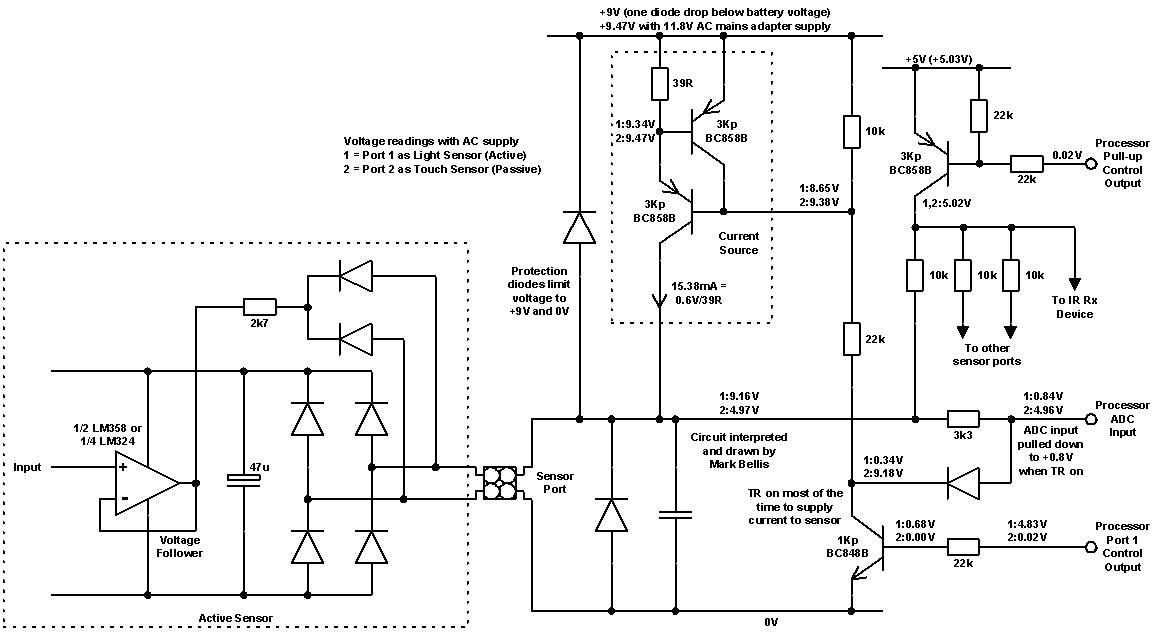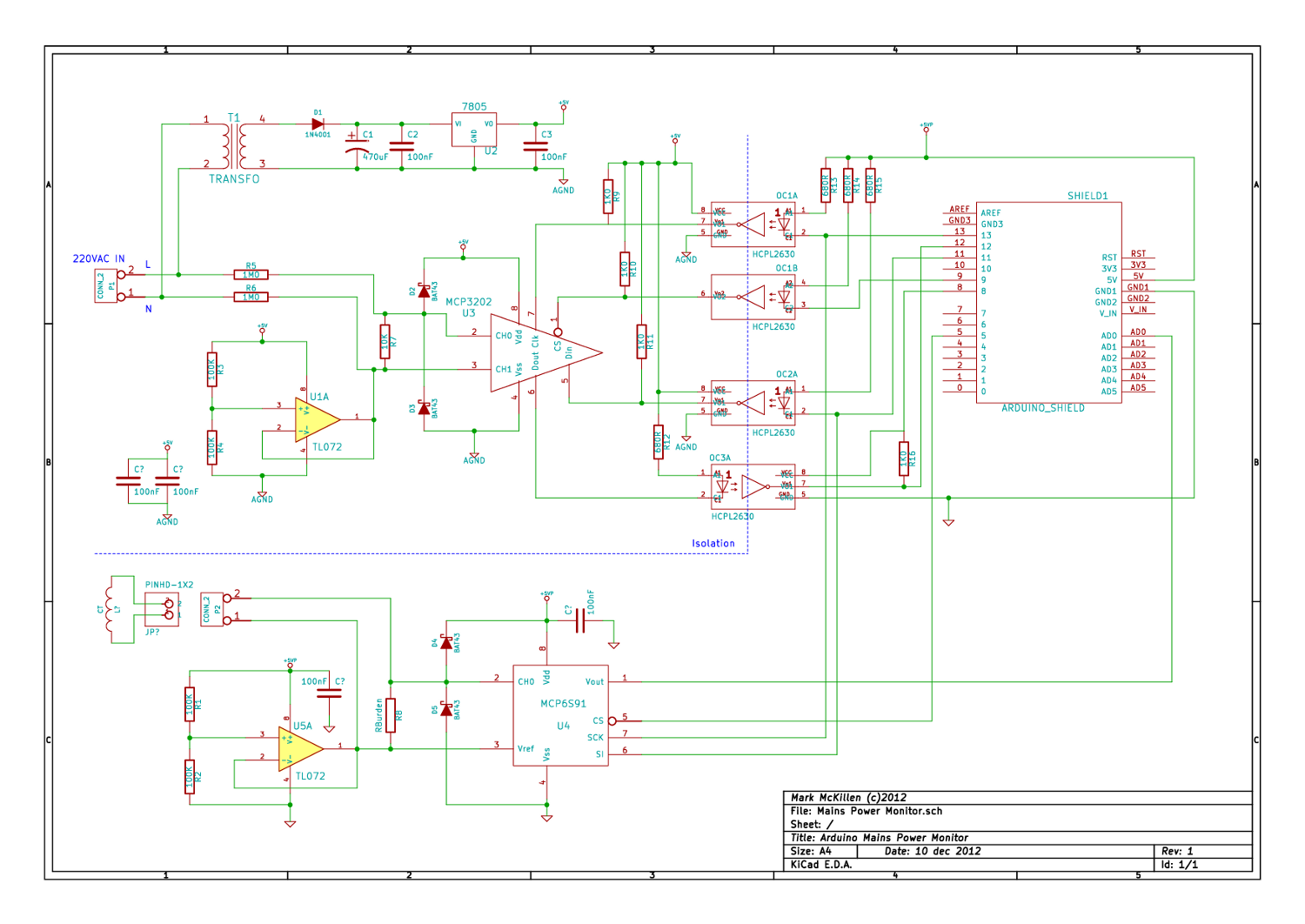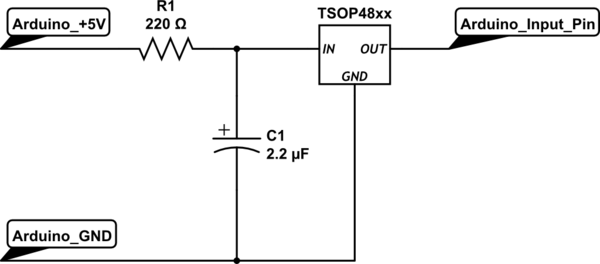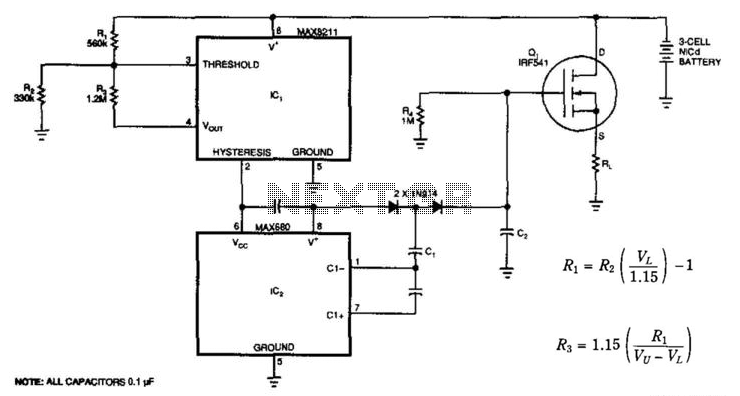
How to connect LED's directly to MAINS
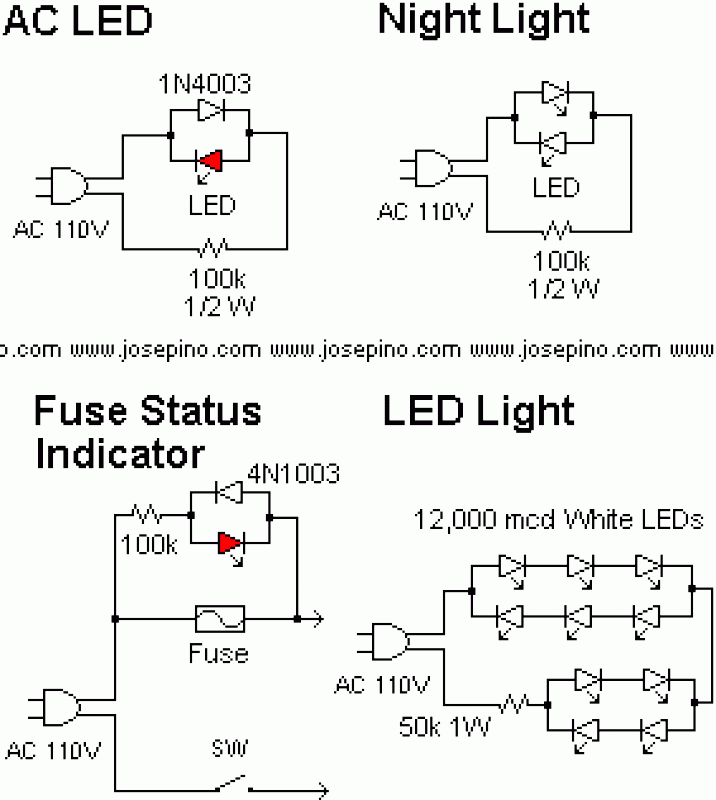
The first circuit demonstrates a single LED connected to a 110VAC source. This configuration can be utilized to indicate the presence of voltage at an AC outlet. A reverse diode is incorporated in the circuit to protect the LED from exceeding its maximum reverse voltage rating. The second circuit, referred to as the "Night Light," utilizes two LEDs arranged similarly to the first circuit. This design provides a soft illumination, enhancing visibility during nighttime activities while minimizing the risk of accidents in low-light conditions. Notably, this circuit can also serve as a voltage detection tool, as both LEDs will illuminate when an AC voltage is present, differentiating it from DC voltages.
The third circuit is integrated into a power supply system, functioning as an indicator for fuse replacement. This allows for easy monitoring of the power supply's operational status. The final circuit, labeled "LED Light," is an experimental setup aimed at replacing traditional fluorescent lighting with LEDs. While it achieves a comparable brightness to a 13-watt fluorescent bulb, the light distribution is uneven. Nevertheless, this circuit exemplifies an energy-efficient alternative to conventional lighting solutions. Each of these circuits highlights the versatility of LEDs in various applications, demonstrating their utility in both practical and experimental contexts.A LED is defined as "light-emitting diode: diode such that light emitted at a p-n junction is proportional to the bias current; color depends on the material used" [Princeton University]. As the LED is a diode, it doesn't conduct electricity in both ways and it is not a resistor, so it needs an additional resistor.
The value of the resistor is defined by: R = (Circuit Voltage - LED Voltage) / LED current. That means, If I need to use a LED connected to 110VAC and the led is a Red one, it needs only 1.8 Volts with 25mA then the formula will be: R = (110 - 1.8) / 0.025. R = 108.2 / 0.025. R = 4,328. In theory, A 4.7k resistor is enough to connect a LED to 110VAC, but, to be honest, I never follow formulas and I go with the experience that I have, so here is my schematic to connect a LED to 110VAC and some interesting applications.
The first circuit shows a single LED using 110VAC. I used this circuit to detect if voltaje is present at the AC outlet. A reversed diode is needed because the LED have a limit on reversed voltage. The second circuit labeled as "Night light" is basically the same circuit but it uses two LEDs. I use it to create a soft light in my room and walls to avoid accidents when I walk around the house during the night.
By the way: I don't walk sleeping. Also, it can be used to know if an unknown voltage is AC or DC. AC voltages will lit both LEDs. The third circuit is used in my power supply so I can detect when I need another fuse. The last circuit, the "LED light" is an experiment to illuminate my room with LEDs instead of fluorescent light or light bulbs. It works fine as a 13 watts fluorescent light but the light emitted is not even. Anyway, it is perfect to save electricity.
Warning: include(partials/cookie-banner.php): Failed to open stream: Permission denied in /var/www/html/nextgr/view-circuit.php on line 713
Warning: include(): Failed opening 'partials/cookie-banner.php' for inclusion (include_path='.:/usr/share/php') in /var/www/html/nextgr/view-circuit.php on line 713
